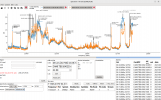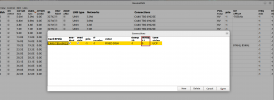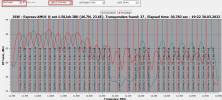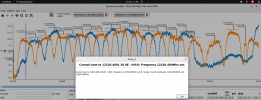satesco
Specialist Contributor
- Joined
- Aug 10, 2008
- Messages
- 2,143
- Reaction score
- 3,061
- Points
- 113
- My Satellite Setup
-
seven antennas,one toroidal with 16 lnbs,
6 satellite receivers,2 Meters,9 PC cards(tbs6983,6903,6590,6504,6522,6209,2603,6909X,6903X,6902se,skystar hd2),2 tuners usb-tbs5927 & tbs5925,Skystar HD.
Satellite reception between 100.5E-50.0W
- My Location
- Romania
Deeptho,
I take your proposal(ad-hoc) to change antennas cum grano salis because tests done with a 1.10m antenna, smaller than the one used in previous tests, 1. 50m, gave me the same result. Moreover, with a Tratec (Holland) 20dB variable attenuator, the signal not only decreased but, on the contrary, increased with both antennas, discovering another mux in the lower band, 11140 H, 30000, 3/4, which in the upper band is at 12689 H, being in the vicinity of 12725 H, which I mentioned on the topic.
If I go by the explanation given with the lnb's, then I have to blame this lnb for the similar result to 12725 H.So two lnbs with two different antennas and two stid cards provide the same effect in both operating systems.
I'm sorry, but the fact that I have to reduce the signal with an attenuator or wet close is not conclusive. Rather it indicates a symptom. I didn't use the wet close, but the attenuator only boosted my signal rather than reduced it, even on a 1.10 m dish. (See pictures). And even if it confirms your assumption, I don't see what it proves. As they say, a nail can be removed with another nail, but the hole remains.
Your answer leaves me with the impression that beyond the arithmetic calculations made (and these are useful), there is no solution to the problem I raised. We must go into the face's inner "chip" to find a solution. As long as we don't see a solution to a particular situation, I find it hard to accept that it is just "my problem." Yes, you're right; it's just my problem; the message delivered belongs to the sender, not the receiver.
Here's how the attenuator signal test looks with the 6903x/6909x cards with 1.50m and 1.10m antennas:
I take your proposal(ad-hoc) to change antennas cum grano salis because tests done with a 1.10m antenna, smaller than the one used in previous tests, 1. 50m, gave me the same result. Moreover, with a Tratec (Holland) 20dB variable attenuator, the signal not only decreased but, on the contrary, increased with both antennas, discovering another mux in the lower band, 11140 H, 30000, 3/4, which in the upper band is at 12689 H, being in the vicinity of 12725 H, which I mentioned on the topic.
If I go by the explanation given with the lnb's, then I have to blame this lnb for the similar result to 12725 H.So two lnbs with two different antennas and two stid cards provide the same effect in both operating systems.
I'm sorry, but the fact that I have to reduce the signal with an attenuator or wet close is not conclusive. Rather it indicates a symptom. I didn't use the wet close, but the attenuator only boosted my signal rather than reduced it, even on a 1.10 m dish. (See pictures). And even if it confirms your assumption, I don't see what it proves. As they say, a nail can be removed with another nail, but the hole remains.
Your answer leaves me with the impression that beyond the arithmetic calculations made (and these are useful), there is no solution to the problem I raised. We must go into the face's inner "chip" to find a solution. As long as we don't see a solution to a particular situation, I find it hard to accept that it is just "my problem." Yes, you're right; it's just my problem; the message delivered belongs to the sender, not the receiver.
Here's how the attenuator signal test looks with the 6903x/6909x cards with 1.50m and 1.10m antennas:
Attachments
-
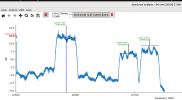 tbs6903x_5.0W_12500-12750 H_atenuator_1.50m dish_2023-03-28_12-39.png64.4 KB · Views: 23
tbs6903x_5.0W_12500-12750 H_atenuator_1.50m dish_2023-03-28_12-39.png64.4 KB · Views: 23 -
 tbs6903x_5.0W_12500-12750 H_atenuator_1.10dish_2023-03-28_12-43.png65.2 KB · Views: 15
tbs6903x_5.0W_12500-12750 H_atenuator_1.10dish_2023-03-28_12-43.png65.2 KB · Views: 15 -
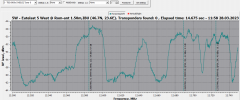 5.0W_6909x_atenuator_1.50m dish_2023-03-28_12-00-09.png86.2 KB · Views: 15
5.0W_6909x_atenuator_1.50m dish_2023-03-28_12-00-09.png86.2 KB · Views: 15 -
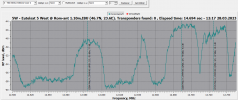 tbs6909x_5.0W_1.10m dish__2023-03-28_12-17-57.png88.4 KB · Views: 20
tbs6909x_5.0W_1.10m dish__2023-03-28_12-17-57.png88.4 KB · Views: 20

 VGLNA on V2 cards work in passthrougth mode (default mode, can work without soft init)
VGLNA on V2 cards work in passthrougth mode (default mode, can work without soft init)

